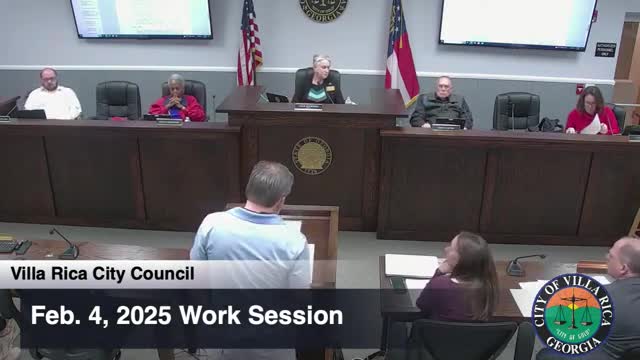Villa Rica reviews wastewater capacity as demand surges amid rapid growth
February 04, 2025 | Villa Rica, Carroll County, Georgia
Thanks to Scribe from Workplace AI , all articles about Georgia are free for you to enjoy throughout 2025!

This article was created by AI using a video recording of the meeting. It summarizes the key points discussed, but for full details and context, please refer to the video of the full meeting. Link to Full Meeting
City representatives revealed that Villa Rica's drinking water demand has escalated dramatically. In 2021, the city required approximately 1.8 million gallons per day, but by 2024, that figure had jumped to nearly 2.3 million gallons. Projections indicate that by 2029, the demand could reach 3 million gallons daily, necessitating the purchase of 1.6 million gallons—over half of the city's needs—due to limitations in local production capacity.
On the wastewater side, the situation is equally urgent. The West Wastewater Treatment Plant, which currently operates at about 60% capacity, is projected to exceed its limits by 2027. Meanwhile, the North Plant is nearing full capacity, raising alarms about the city's ability to manage wastewater effectively as new developments continue to emerge.
Officials have been proactive, seeking guidance from the Environmental Protection Division (EPD) on potential plant expansions and discharge locations. However, the timeline for these expansions remains uncertain, with estimates suggesting that it could take several months to years to secure necessary approvals and complete construction.
The discussion also touched on the implications of a potential moratorium on new projects. Some council members expressed concern that halting new developments could deter commercial growth, particularly as residents have been vocal about the need for more retail and dining options in the area. The fear is that without a clear path forward, businesses may choose to invest elsewhere, leaving the community without the amenities it desires.
As the meeting progressed, officials acknowledged the importance of aligning infrastructure improvements with ongoing and future construction projects. They emphasized the need for a strategic approach to ensure that the city can accommodate growth without compromising service quality.
In conclusion, Villa Rica stands at a crossroads, balancing the demands of a growing population with the limitations of its water and wastewater systems. The city is committed to finding solutions, but the path forward will require careful planning, collaboration, and timely action to ensure that the needs of its residents are met without delay.
Converted from Villa Rica meeting on February 04, 2025
Link to Full Meeting
Comments
View full meeting
This article is based on a recent meeting—watch the full video and explore the complete transcript for deeper insights into the discussion.
View full meeting
